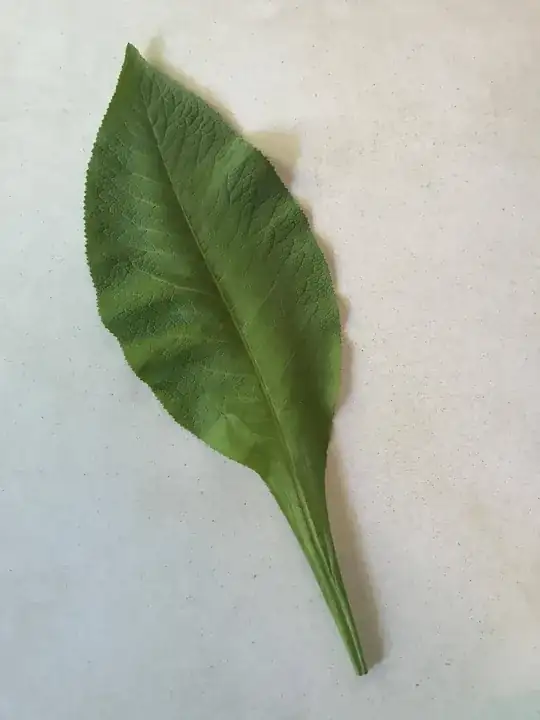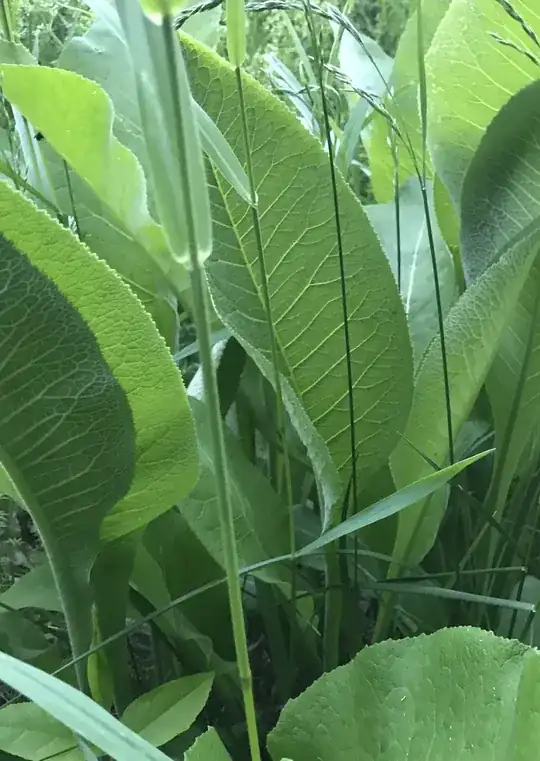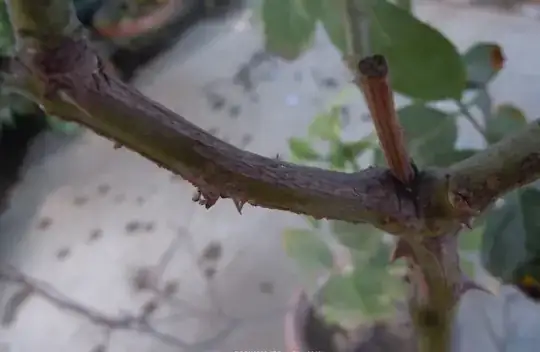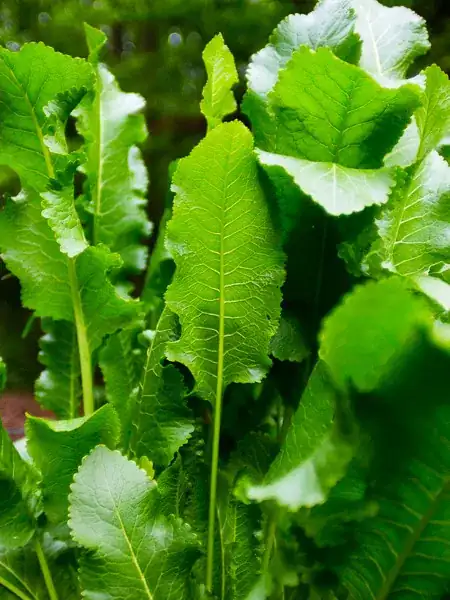


My son picked a leaf off this plant and rubbed it on his face to see how soft it was (bad idea, I know). Within 12 hours he had a lesion with weeping blisters which we suspect is photosensitive. A prescription med and keeping it covered is helping, but we’d like to know what it is. The leaf is huge - 13cm wide and 38 cm long. It was growing in an old hay field in eastern Ontario. It does not seem to be Wild Hogweed or Parsnip. Can anyone help identify it?
